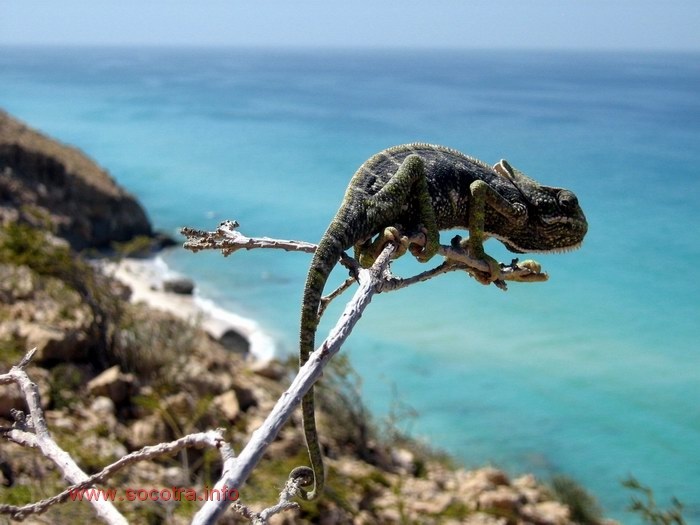We here up in da' Salad like things of a slightly weirder bent so when my physical therapist mentioned a forest in Yemen I had to investigate further. Turns out there is a forest in Yemen (more to come on that later) but in my Internet sleuthing I kept on coming across references to an island off of Yemen called Socotra. Further research revealed this island to be a very special place indeed.
Six million years of isolation mean that this archipelago is third behind the Galapagos and Hawaii in terms of endemic species and it is the most isolated piece of continentally derived land on the planet. While there are number of unique reptiles, birds, snails, and even a terrestrial crab which is the top predator of the island- the island is most notable for its unique flora such as the Dragon's Blood Tree pictured at the start of the post (the sap is red like blood). But other plants are no less evocative looking and are why the island is often referred to as the most alien place on earth.
 |
| Desert Rose. Adenium obesum |
 |
| Copywrite The Mysterious Socotra Island. http://www.funonthenet.in/articles/Socotra-Island.html |
Of course just looking at the dry subtropical landscape and one can not help but imagine giant reptiles swarming around on it. How these reptiles lived one can not help but imagine. Were the lizards herbivorous, like giant skinks maybe? or possibly monitor lizards? Or perhaps the lizards and crocodiles were not herbivorous at all but feasted on the abundant crabs/snails/inverts of the islands?
The islands human inhabitants have their own ancient unwritten language and are derived from Arabian and African peoples. They have a long history of herding on the island but have adapted to the island in such a way that traditional herding practices do not greatly diminish the islands unique flora. However the loss of traditional pastoral practices, such as culling male goats, jeopardizes native flora.
Recognized by UNESCO as a world heritage site, the island just recently opened up for tourism.
One wonders if the island, so isolated and pristine, which has been colonized by many who ultimately leave- may have met its match in ecotourism.
Pertinencia
(Damme, Banfield) 2011. Biodiversity Conservation in the Arabian Peninsula Zoology in the Middle East. Past and present human impacts on the biodiversity of Socotra Island
www.kasparek-verlag.de/.../031-088%20VanDammeBanfield.pdf
Support me on Patreon.
Like antediluvian salad on facebook.
Watch me on Deviantart @NashD1.Subscribe to my youtube channel Duane Nash.
My other blog southlandbeaver.blogspot.



4 comments:
I wonder if dragon's blood resin comes from the dragon's bllod tree?
From Wiki
A great degree of confusion existed for the ancients in regard to the source and identity of dragon's blood. The resin of Dracaena species, "true" dragon's blood, and the very poisonous mineral cinnabar (mercury sulfide)[1] were often confused by the ancient Romans, and there appears to have been a tendency to call anything that was bright red "dragon's blood". In ancient China, little or no distinction was made among the types of dragon's blood from the different species. Both Dracaena and Daemonorops resins are still often marketed today as dragon's blood, with little or no distinction being made between the plant sources; however, the resin obtained from Daemonorops has become the most commonly sold type in modern times, often in the form of large balls of resin.
weird stuff... dr seussian almost:
The desert rose got its name from its blossoms, though the plant is not related to cultivated roses. Herders tie strips of the poisonous bark around the necks of young goats in an effort to protect them from marauding feral cats.
http://ngm.nationalgeographic.com/2012/06/socotra/melford-moffett-photography#/10-desert-rose-670.jpg
Right on I had not yet seen that- nat geo does the best photo essays!
Post a Comment